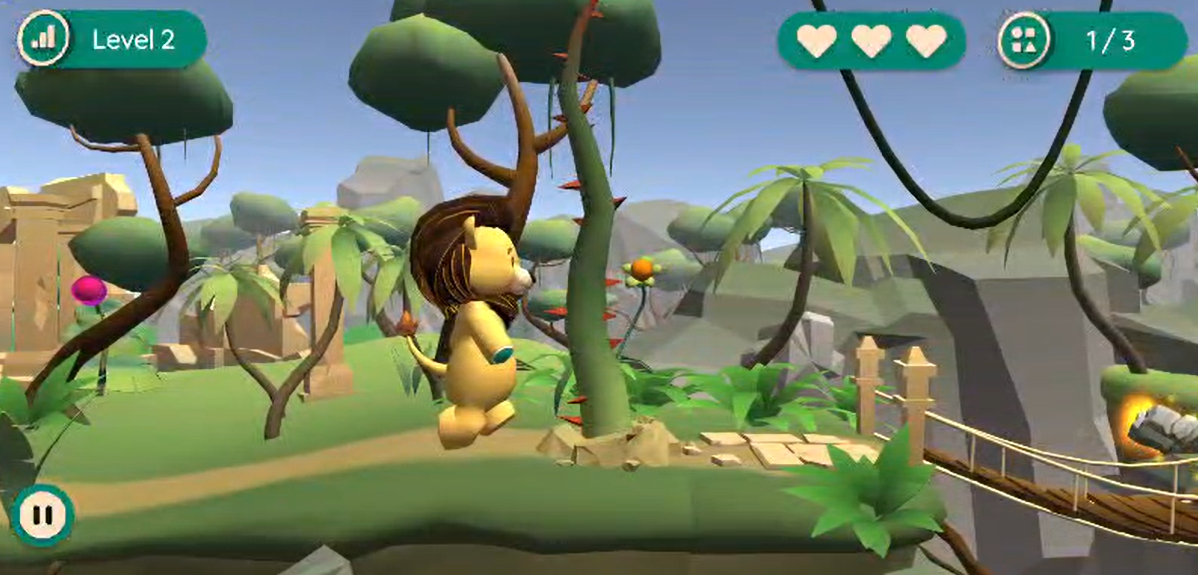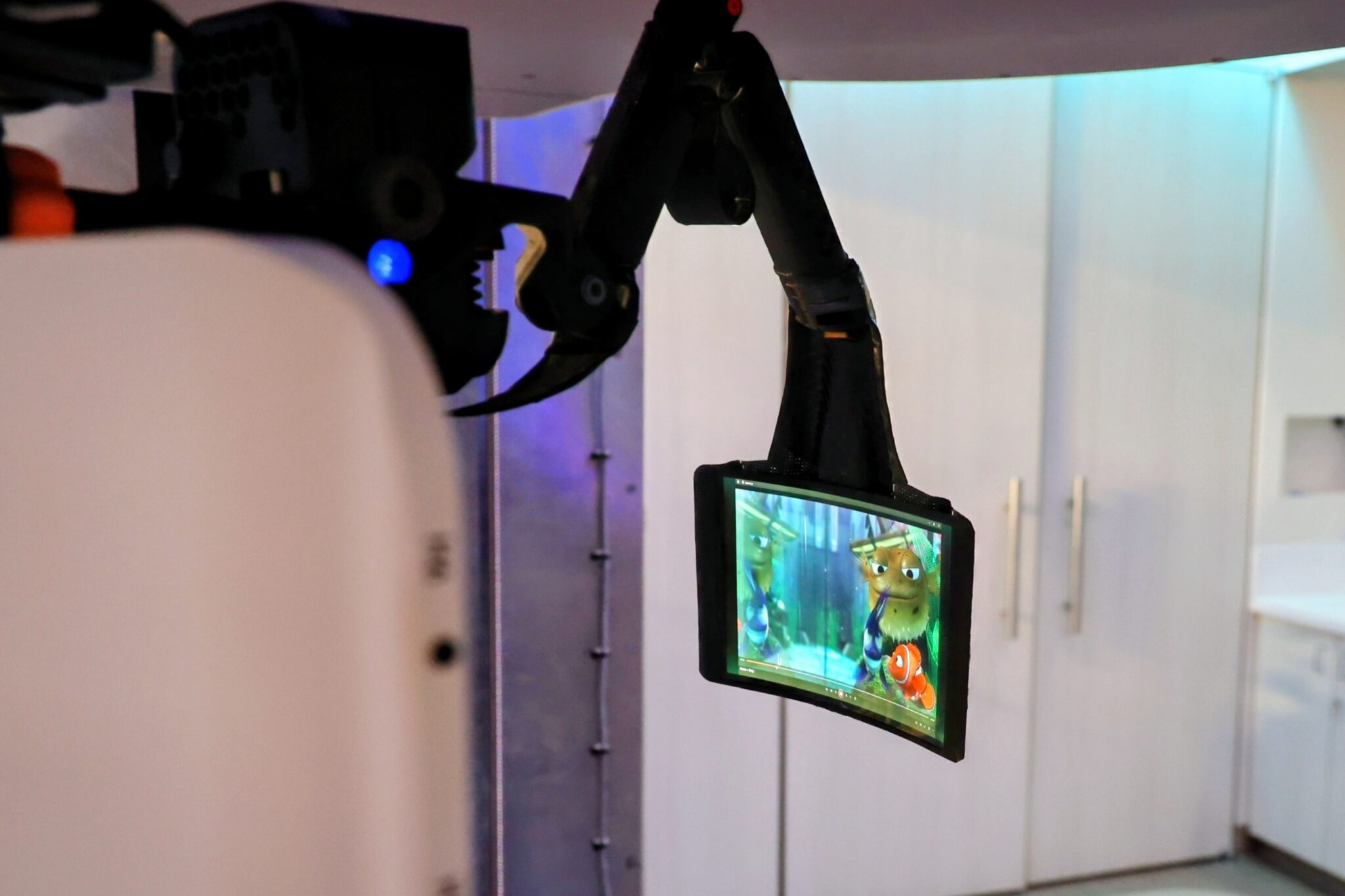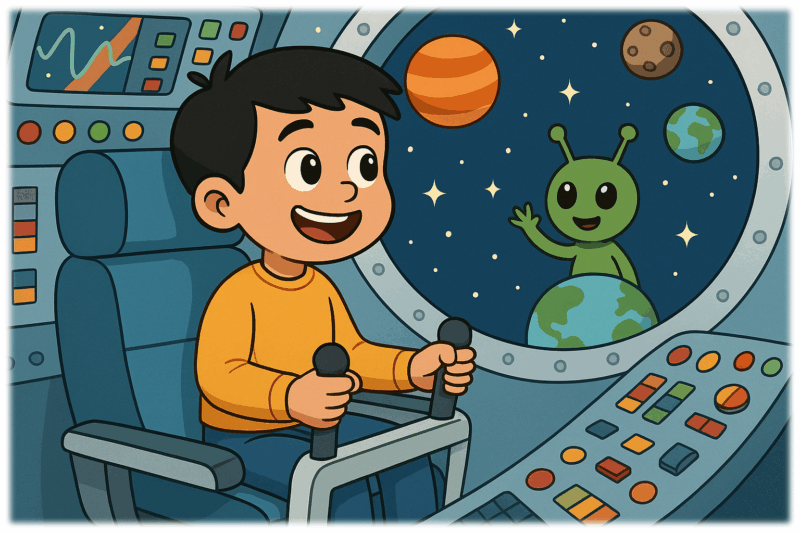Using design, education, and distraction to change future experience.
Young people in cancer care
It is estimated that 400,000 children and adolescents develop cancer each year. (Adamczewska-Wawryzyowicz et al., 2023). Approximately one-third of all children with cancer will be treated with radiation therapy either as a stand-alone treatment or, more commonly, combined with chemotherapy and/or surgery (Oswald., 2025).
The cancer pathway for children is often long, with exposure to a lot of unfamiliar environments, healthcare professionals and significant disruption to everyday life for tests, procedures and treatments (O’Connor and Halkett., 2023). It is for this reason that anxiety and distress often score highly in this patient group. Although radiation therapy is a painless treatment it can still induce feelings of distress in children.
Consequently, many cancer care governing bodies are instructing institutions to focus efforts on reducing anxiety and improving the overall experience of radiation therapy for patients within their guidelines.
Common techniques employed to reduce anxiety include the use of audio-visual distractions and immersive technology with the support of dedicated departmental pediatric support staff such as play therapists and specialist radiation therapists (Colori et al., 2023).
Our Goal
As a company, we are transforming the way patients of all ages receive radiotherapy. With a simple 90-degree change in patient positioning from supine to upright, we believe we can positively impact many aspects of treatment.
At the heart of our mission is a commitment to making radiation therapy more human. We believe it is essential to invest the time and resources necessary to ensure that, when we are ready to offer pediatric treatments, we have done everything possible to make the experience as positive as it can be.
A key part of this effort is to reduce the need for daily anesthesia by using education, engagement, and distraction techniques to help young patients remain calm and still during treatment.
In this article, we will lay out our strategy for a holistic approach that we hope will make the radiotherapy treatment journey a little easier in the future.
Upright Positioning to Enhance Communication and Engagement in Paediatric Radiotherapy
Our technology is different to conventional radiation therapy treatment machines as it is designed to support patients in a seated and semi-standing position for treatment rather than lying down supine. We hear feedback from adult patients who have trialled our system, that they feel more comfortable upright and like the fact that they can connect with their healthcare provider eye-to-eye (Boisbouvier et al, 2022). So how do we feel this will impact a child’s experience in the future?
Effective communication is essential to delivering high-quality care in pediatric oncology (Lee et al., 2022). It relies on a careful balance of verbal and non-verbal skills to build trust and sustain a strong, collaborative relationship between the patient and the care team. This, in turn, helps ensure that the child understands their treatment and supports compliance, which is critical for both safety and outcomes.
Positioning children upright for radiotherapy naturally supports these principles. When seated or standing face-to-face with their treatment team, children can maintain eye contact, making it easier for providers to pick up on subtle facial expressions, body language, and other non-verbal cues that may indicate discomfort or distress.
Such signals are far easier to detect than when a patient is lying supine, where they can be overlooked—particularly since younger children often communicate emotions indirectly through hints or non-verbal behaviors (Kleye et al., 2022).
Maintaining eye contact throughout setup and speaking directly to the child fosters rapport, helping to build trust and engagement (Bell & Condren, 2016). Treating children respectfully, offering age-appropriate explanations, and involving them in decision-making have all been shown to improve adherence, reduce adverse effects, and increase understanding (Bell & Condren., 2016).
An upright position also encourages more active participation. When children can sit or stand, it is easier for them to play an active role in their treatment, which has been shown to reduce fear and foster a sense of control. This aligns with the United Nations Convention on the Rights of the Child, which states that children have the right to participate in their own healthcare and to have their views heard (Carlsson et al., 2020).
Helping Children to Prepare for Treatment Through Play – Xploro App
Today’s children are growing up surrounded by technology, from interactive classrooms to immersive games and virtual adventures. Learning, play, and digital experiences now blend together in ways that make discovery feel engaging and exciting. If technology can help children learn, connect, and grow, then why shouldn’t it also help them prepare for something as important as cancer treatment?
That’s where Xploro comes in. Xploro created an educational platform because they recognized that when children lack proper information about all healthcare procedures, they can feel more anxious and stressed, which can have a long-term impact on them as individuals. Xploro has developed augmented reality, gameplay and an artificially intelligent Avatar buddy to deliver health information to young patients.
Leo Cancer Care has partnered with Xploro to create a fun, interactive, and educational tool designed specifically for children preparing for upright cancer treatment in the future. The result is Statue Quest – a game where children guide Leo the Lion through a vibrant jungle adventure. Along the way, Leo must pause to avoid obstacles, collect statue pieces, and complete poses that players are themselves challenged to copy and hold. These fun activities mimic the stillness required during radiation therapy, helping children build confidence and practice calmness in a playful, supportive way.

But Statue Quest isn’t just about fun – it’s also educational. As players progress, they will unlock bite-sized facts about radiation therapy, giving children and families a gentle introduction to what treatment will involve. By combining gamification with storytelling, the game aims to make radiation therapy treatment less daunting and more approachable.
This game supplements the work already undertaken with Xploro, which includes a storybook including a cartoon version of the Leo Cancer Care Upright technology, so children can see for themselves what the technology looks like before they start their treatment.
Using Distraction During Treatment to Offer an Alternative to Daily Anesthesia – AVATAR Device
It’s no secret that screens often get a bad reputation: overused, addictive, or isolating. Yet in the healthcare setting, screens can also work in surprising ways. Through immersive distraction, they can create a kind of gentle trance, capturing attention and helping young minds focus. If there’s any place where that kind of distraction may be welcome, it’s during radiotherapy.
Traditionally, many children under a certain age require anesthesia to stay still for treatment. While anesthesia remains a critical tool, we are exploring ways to offer alternatives that give clinicians, parents and children more choice and make the experience feel less clinical. Distraction techniques can be one such alternative, and the results so far are encouraging.
At Leo Cancer Care we recently signed an agreement with Stanford Medicine to license the AVATAR system (Audiovisual-assisted therapeutic ambiance in radiotherapy). Stanford Medicine developed this system with the aim of reducing the need for anesthesia during radiotherapy and reducing patient anxiety by using an immersive radiolucent screen during treatment. Early research from a 10-center prospective trial found that with the AVATAR system there was a 78% anesthesia avoidance in 3-10 year olds. Improvement in quality of life significantly increased during treatment for patients aged 5-7 years and anxiety decreased throughout treatment for all age groups (Gutkin, et al 2023).

While distraction may not be the right approach for every child, providing options and control over their treatment experience is at the heart of what we aim to achieve. In combining technology, play, and personalization, we hope to make radiotherapy a more human, supportive experience for young patients.
Please note: The AVATAR system is not yet commercially available.
Toby’s Magic Chair: A Future Storybook To Help Normalize Treatment
Leo Cancer has in production a storybook for children in the future undergoing treatment in an upright position. The storybook follows a small boy called Toby preparing for treatment in the Leo Cancer Care upright treatment machine. Toby is supported through treatment by his play therapist, Sarah. She helps Toby to unlock his imagination and create exciting adventures he can go on each day for treatment. We see his treatment chair transform into the seat of a rocket-ship, as it blasts off into space and a driver’s seat in a racing car competing in the Grand Prix.

We recognize that upright treatment is new, and for each child, their treatment journey is unique. Knowing that another child has been on this journey, or reading about it in a book, we hope to help children understand that it is normal and something they can manage. That is why we have created this storybook, with the plan to provide it to all centers that will offer upright treatments to children in the future.

This storybook allows children to explore their own imagination as they prepare for treatment and share with family and friends a story that they can relate to and feel a part of.
Leo Cancer Care remains committed to making the experience of radiation therapy ‘More Human’ and less daunting, especially for our younger patients. We understand the responsibility we have to ensure that their voices are heard and their worries and anxieties seen, so that they can continue through their treatment as comfortably as possible.
Please note: Leo Cancer Care’s technology is still in development. No patients have been treated with the system yet. The first treatments are expected to begin in 2026, but it will not be widely available initially, as adoption grows and treatment centers come online.
References
Adamczewska-Wawrzynowicz K., et al. Modern treatment strategies in pediatric oncology and hematology. Discov Oncol. 2023. 14;14(1):98. doi: 10.1007/s12672-023-00658-7. PMID: 37314524; PMCID: PMC10267092.
Bell J, Condren M. Communication Strategies for Empowering and Protecting Children. J Pediatr Pharmacol Ther. 2016. 21(2):176-84. doi: 10.5863/1551-6776-21.2.176. PMID: 27199626; PMCID: PMC4869776.
Boisbouvier S., et al. Upright patient positioning for pelvic radiotherapy treatments. Tech Innov Patient Support Radiat Oncol. 2022. 28;24:124-130. doi: 10.1016/j.tipsro.2022.11.003. PMID: 36471684; PMCID: PMC9719023.
Carlsson IM., et al. Creating a communication space in the healthcare context: Children’s perspective of using the eHealth service, Sisom. J Child Health Care. 2021. 25(1):31-43. doi: 10.1177/1367493520904804. Epub 2020 Feb 12. PMID: 32048874; PMCID: PMC7897780.
Colori A. et al. Paediatric radiotherapy in the United Kingdom: an evolving subspecialty and a paradigm for integrated teamworking in oncology. Br J Radiol. 2024. 23;97(1153):21-30. doi: 10.1093/bjr/tqad028. PMID: 38263828; PMCID: PMC11027255.
Gutkin, P., et al. Feasibility of the Audio-Visual Assisted Therapeutic Ambience in Radiotherapy (AVATAR) System for Anesthesia Avoidance in Pediatric Patients: A Multicenter Trial. International Journal of Radiation Oncology*Biology*Physics. 2023.117(1): 96-104,
Kleye, I., et al. Children’s communication of emotional cues and concerns during a preoperative needle procedure. Patient Education and Counseling. 2022. 105(6):1518-1523,
Lee T, Lin EC, Lin HC. Communication skills utilized by physicians in the pediatric outpatient setting. BMC Health Serv Res. 2022. 4;22(1):993. doi: 10.1186/s12913-022-08385-5. PMID: 35927741; PMCID: PMC9354305.
Lerwick JL. Minimizing pediatric healthcare-induced anxiety and trauma. World J Clin Pediatr. 2016. 8;5(2):143-50. doi: 10.5409/wjcp.v5.i2.143. PMID: 27170924; PMCID: PMC4857227.
O’Connor M., Halkett GKB. Supporting paediatric patients to receive radiation therapy without sedation or general anaesthetic. J Med Radiat Sci. 2023. 70(4):357-359. doi: 10.1002/jmrs.734. Epub 2023 Oct 25. PMID: 37880876; PMCID: PMC10715346.
Striano T., et al. Eye contact influences neural processing of emotional expressions in 4-month-old infants. Soc Cogn Affect Neurosci. 2006.1(2):87-94. doi: 10.1093/scan/nsl008. PMID: 18985122; PMCID: PMC2555439.
Subscribe to our newsletter
STAY CONNECTED
Get the latest updates and exclusive offers delivered straight to your inbox
Subscribe